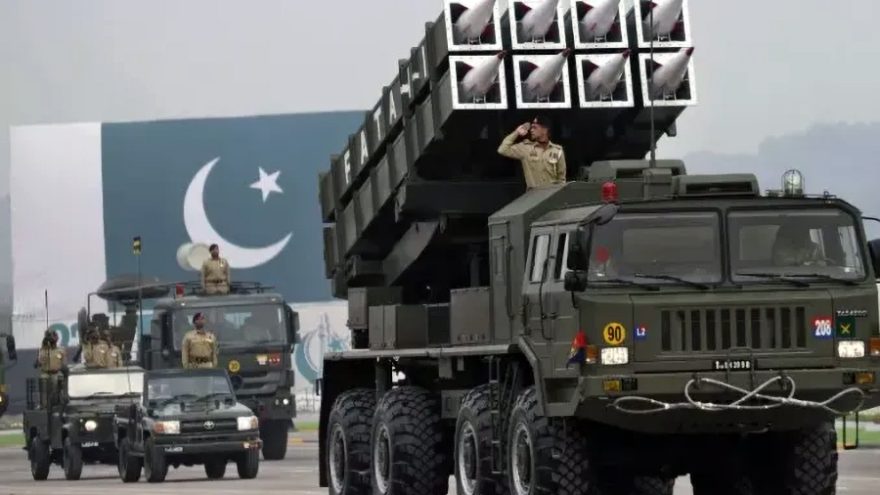Our Terms & Conditions | Our Privacy Policy
Pakistan’s Budget Serves Guns Before People

One of the foundational lessons in introductory economics concerns the central problems faced by any economy, particularly the question of “What to produce.” This principle, it seems, is one that policymakers in Islamabad have chosen to overlook. The concept essentially outlines that, due to the scarcity of resources, an economy must decide how to allocate its limited means between producing consumer goods or capital goods, and between essential items and luxury commodities.
In a world increasingly shaped by globalization, frequent uncertainties, and economic disruptions resulting from epidemics, natural disasters, financial crises, or macroeconomic instabilities, the role of governments has become more focused and vital. It is now widely accepted that governments are responsible for ensuring the welfare of their citizens. Effective governance, in this context, requires the provision of basic amenities, access to public goods, and the creation of opportunities that enable an improved standard of living.
Yet the current direction of Pakistan’s governance appears to depart from this obligation. Returning to the fundamental economic dilemma of what to produce, one observes that, in light of the severe challenges Pakistan has faced in recent years such as natural calamities, pandemics, and economic downturns, the government’s agenda ought to prioritize socio-economic development, growth, and the well-being of its population. This would logically include enhancing infrastructure, expanding access to education, and increasing employment opportunities. However, the state appears to be placing greater emphasis on security-related expenditure than on developmental investment.
This tendency reflects a deeper structural issue that has long shaped Pakistan’s political economy. The military establishment continues to exert considerable influence over national decision-making, often overriding the roles of elected officials and civilian institutions.
Pakistan’s economy is currently experiencing one of its most serious crises and is sustained largely through assistance from the International Monetary Fund, which in turn imposes stringent conditions. The most recent budget includes a substantial allocation of 2.55 trillion rupees, which is approximately nine billion United States dollars, for defense purposes. Between the fiscal years 2016 to 2017 and 2025 to 2026, the defense budget has more than doubled. These figures do not include the additional financial burden created by military pensions, which also place significant strain on national finances.
During the announcement of the latest budget, Finance Minister Muhammad Aurangzeb remarked that it was time to change the economy’s structure by implementing fundamental reforms. However, this statement appears largely rhetorical. A closer examination of the numbers suggests otherwise. The total federal allocation to education, including both basic and higher education, has been reduced by forty-four percent, falling from 103.8 billion rupees in fiscal year 2024 to 2025 to only 58 billion rupees in the current budget. In the year 2023, Pakistan devoted merely 1.9 percent of its gross domestic product to education, which is below the regional average in South Asia, typically ranging between two and three percent. A similar trend is evident in the healthcare sector, where public investment remains inadequate. Health expenditure in Pakistan stands at approximately one percent of the gross domestic product, far below the recommendations of international bodies such as the World Health Organization.
The terms imposed by the International Monetary Fund further limit the government’s fiscal flexibility and intensify the tax burden on citizens. Without strong political determination, the government now lacks both the will and the capacity to prioritize socio-economic needs in its policymaking.
The precarious state of the economy is not merely the result of recent events. Rather, it is the culmination of decades of policy decisions that have systematically deprioritized inclusive economic growth and the welfare of the population. The long-standing geopolitical rivalry with India and the consistent focus on military objectives have shaped a national agenda that tends to neglect economic development. The current budget continues this pattern, directing substantial resources toward the defense sector. Moreover, ongoing austerity measures have further constrained the ability of policymakers to promote regional cooperation or to improve the domestic quality of life.
A publication by the European Foundation for South Asian Studies offers further insight, stating that Pakistan’s longstanding support for regional militant groups does not only affect its internal security, especially in relation to the Tehrik-i-Taliban Pakistan, but also isolates the country internationally and prevents it from participating in global supply chains. This observation highlights the consequences of emphasizing militarization over development. What is ultimately being chosen is a path that prioritizes conflict preparedness over economic progress and public welfare.
This ongoing preference reflects a deeper failure to resolve the fundamental economic question of what to produce. A reformed political structure that places the well-being of citizens at the center of governance could pave the way for a more balanced and constructive national agenda. Increasing the share of the national budget allocated to development while responsibly moderating military expenditure offers a pathway toward sustainable prosperity, even if this approach challenges long-entrenched institutional practices.
Author’s Declaration: The author affirms that there are no relevant affiliations or financial interests that could be perceived as a conflict of interest in relation to this article. The content is original, has not been previously published, and is not under consideration elsewhere. The author consents to its publication in Khaama Press.
Editorial Disclaimer: The views and opinions expressed in this article are those of the author and do not necessarily reflect the official position or editorial policy of Khaama Press.
Images are for reference only.Images and contents gathered automatic from google or 3rd party sources.All rights on the images and contents are with their legal original owners.



Comments are closed.